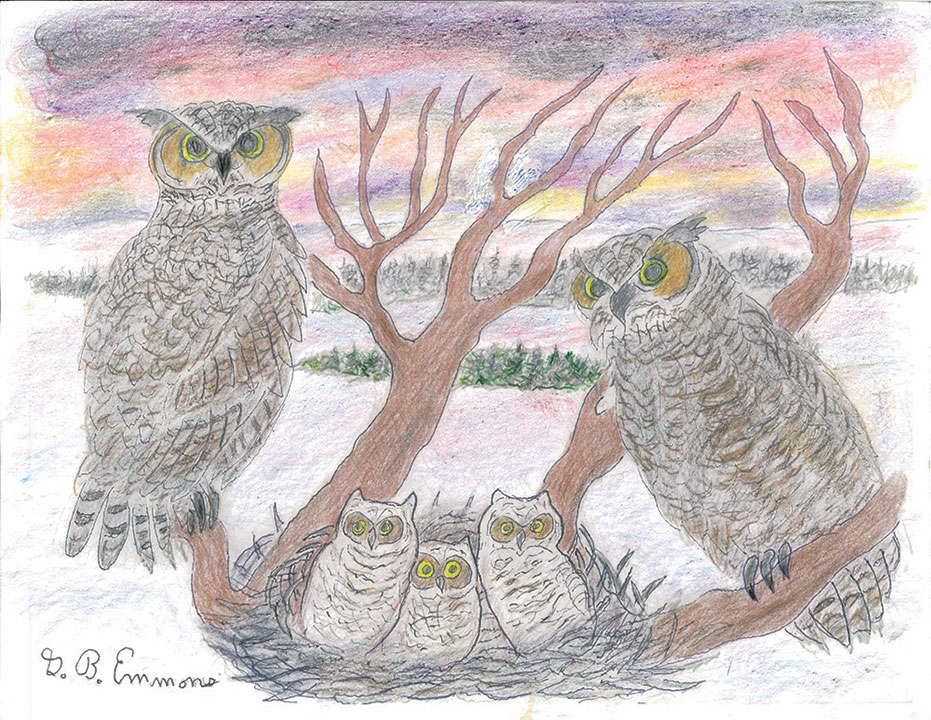The Great Horned Owl is found everywhere in America because of its aggressive and powerful hunting ability. It is also known as the Tiger Owl for taking prey as various as rabbits, hares, snakes and even skunks. It will even attack a porcupine or a Bald Eagle, often with fatal results for both prey and predator.
My illustration shows a pair already nesting now in late winter, well earlier than any other birds, in a tree behind my seaside home on Little Bay in Fairhaven. The female shown on the right of my drawing is always bigger than the male. The facial disk design on her chest of front feathers has the channel passage to send and direct sound directly into her ears so her hearing is much better than that of humans.
The ear tufts on each side of the owls’ heads have nothing to do with acting as horns as a weapon to protect themselves, and the owls’ eyes are fixed in their heads so to follow a vision moving to either side requires turning their heads in a circle around the body to stay focused. If their heads are always pointed right at you, the expression on their faces seems to look right through your every thought about them.
The hooting of this owl is usually low pitched, lasting for five or six startling calls, especially in courtship communication early in the season to get a prospective mate’s undivided attention. Such a deep hoot has a special meaning and quality to be heard rolling through the night into every corner of the forest and resounding unlike any other mating invitation you have ever heard.
The presently wide, northern-hemisphere distribution of this species apparently goes back to fossils found at the end of the ice-age passage across the Bering Strait in Alaska with the Snowy Owl that began for both species to spread its distribution widely into the present time. The Horned Owl came ahead somewhere in time with the heaviest anatomy with 4 feet in height and a wingspan of more than 3 feet.
When this remarkable creature crosses your bird-watching experience, it makes a lasting impression never to be forgotten to tell future generations about what you have just experienced by reading and visualizing my article in this issue.
By George Emmons
